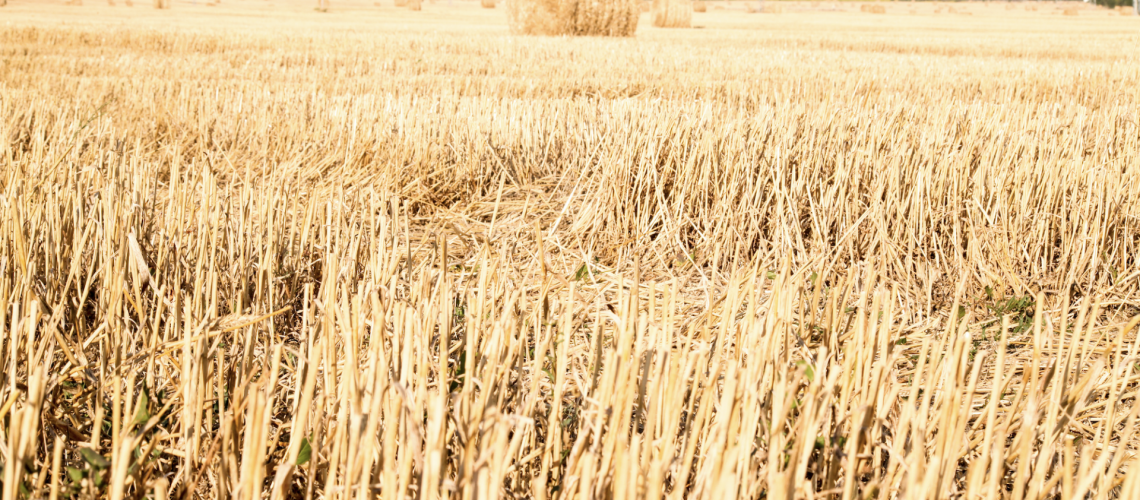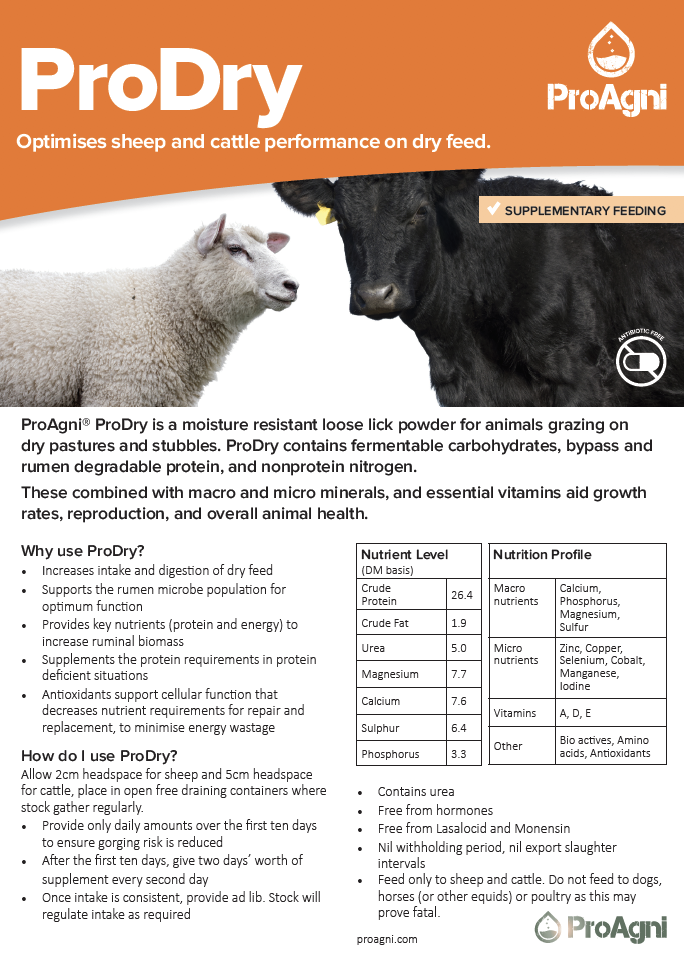Regardless of whether you’re in a beef or sheep operation, dry feed utilisation is an important issue. In our climate, broadly speaking, we have periods when standing dry feed and stubble are an important part of our grazing and nutritional program.
What’s really clear is, regardless of region, the quality of standing dry feed and stubble at its best early in the season. As these feeds age and are exposed to weather events, including rain, their value to our animals is reduced.
It’s for this reason that every effort should be made during the early part of the season to turn as much of our standing dry feed and stubble into weight gain, fertility (and wool growth) as we possibly can. That’s particularly important in a year when feed is less abundant.
Dry feed utilisation using intelligent supplements
Early in the season standing dry feed and stubbles have residual seed, grain and leaf material that when supported with an intelligently designed supplement, delivers a better production result.
The most cost effective ‘intelligent supplements’ are in lick form. They bring a range of high quality ingredients together to meet the protein, energy and micro-nutritional requirements of animals in our production systems;
- Protien
Proteins that come from a range of different sources that are either by-pass, rumen degradable or non-protein nitrogen (urea) along with new technology that delivers a significant increase in rumen microbial mass supporting better digestion, health and growth. - Energy
Providing highly fermentable compounds is key to driving higher levels of rumen microbial activity, offering the best chance of standing dry feed and stubble to be used efficiently. - Micro Nutrition
Supporting animals with increased rates of available nutrients is important to maintain health, support breeder fertility and allow progeny to grow to their genetic potential at a time when performance is expected to be lower. Reducing incidence of pinkeye, snotty nose and coughing are part of that.
As the season rolls on towards February, the best early feeds are degraded from exposure to summer weather events and the best material has been consumed. The feeds that remain are most often incapable of achieving maintenance.
When feed values have deteriorated so that stalks and little else remain, supplement’s can no longer deliver the value they do when feeds are younger and fresher. A supplement is no substitute for feed and should be removed if supplementary feeding is not introduced.
ProAgni have utilised the latest technology to develop an effective but simple to use powdered lick that’s moisture resistant and designed to deal with dry feeding challenges.
ProAgni ProDry is a powdered lick designed to deliver quality protein and energy supplements to maximise digestion efficiency and meet the ever increasing micro-nutrient demand breeding and production animals have whilst grazing standing dry feeds and stubble.
Supplementing breeding and production animals with a low but well managed quantity of grain whilst grazing standing dry feeds and stubble can also be very effective if adequate measures to manage over consumption and even distribution are taken.
There are a number of key feeding infrastructure and animal management components that need to be achieved and are critical to any safe and successful grain assist program.
When using a ProAgni Lick formulation:
- Provide 1 lick container (half drench drum or similar) per 50 hd for sheep.
- Provide 1 lick container (1/2-1/3 200ltr drum or similar) per 20 hd for cattle.
- Make available at common camps or water points initially.
- Once animals are engaged with the lick, place at intervals across the paddock.
- Drill holes in the sides of containers as water will not penetrate lick.
When considering a Grain Assist program:
- Add ProAgni ProTect S (Sheep) or ProTect C (Cattle) to grain for micro-nutrition support and to manage the risk of acidosis.
- Induction management is crucial to a safe grain assist program.
- Controlling the number of animals in each mob is an important management tool.
- The number of grain feeders available is important to drive even distribution.
Target dose rate:
20g/hd/day sheep and 100g/hd/day cattle


